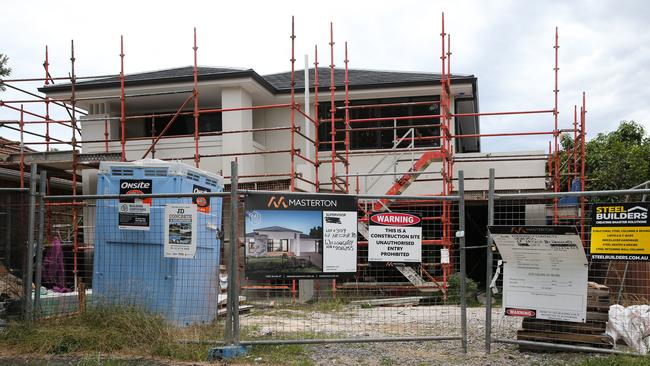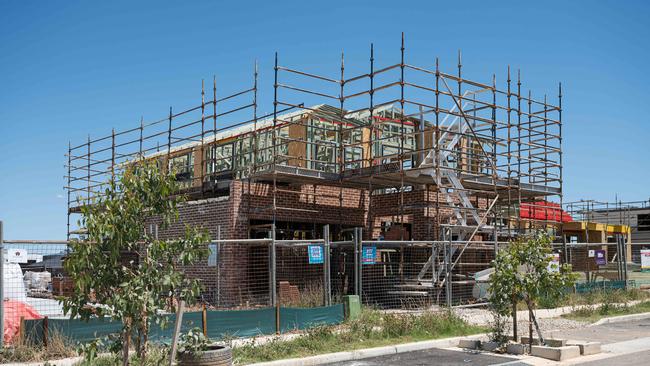Australian housing construction continues to lag despite December boost
Australia remains behind its ambitious target of 1.2 million new homes by 2029 despite a bounce in new housing approvals in December.

Companies
Don't miss out on the headlines from Companies. Followed categories will be added to My News.
Australia fell 68,606 homes short of its National Housing Accord in the very first year of the target, according to new Australian Bureau of Statistics figures.
Monday’s building approval data shows Australia approved 171,394 homes in 2024, short of the 240,000 new homes a year we need to build to hit 1.2 million new homes by 2029.
Despite falling short overall, there was an uptick of building approvals in December, coming in at 15,174 for the month, following a 3.4 per cent fall in November.
Private sector dwellings excluding houses, which includes semi-detached, row or terrace houses, townhouses and apartments, rose 15.2 per cent to 6209 dwellings, after a 10.4 per cent fall in November.

These huge swings can happen based on large apartment complexes approvals in any given month.
CreditorWatch chief economist Ivan Colhoun said pleasingly the approvals data continued to show an upturn in construction activity.
“Current approval rates of 15,000 per month equate to around 180,000 new dwellings annually,” Mr Colhoun said.
“At current household formation rates, that’s sufficient to house the expected growth in the population currently occurring however will likely not meet pent-up demand for previous strong population growth and additional social housing demand for some time.”
Mr Colhoun said the uptick in construction could be a positive sign for mortgage holders ahead of the Reserve Bank’s February 17-18 meeting.
“Construction approvals normally turn up before the first cut in interest rates and improve further as interest rates are reduced. I am expecting a 25 bps cut in interest rates at the RBA’s February Board meeting in two weeks’ time,” he said.
Master Builders Australia chief executive Denita Wawn said new homes had a modest gain of 3.9 per cent for the year, driven by a 7.0 per cent boost in detached housing approvals.
“Australia desperately needs to boost housing supply, and this will only be achieved when the cost of new home building starts to moderate and project costs stack up,” Ms Wawn said.
“It’s more than just a number – the lack of housing supply is leading to rising rents, homelessness and higher mortgages, which impacts the wellbeing of individuals, families and communities.
The Albanese government has previously announced a new policy to get more Aussies into the construction sector.
Apprentices who work in residential construction would get a $10,000 cash bonus under an election policy launched by Prime Minister Anthony Albanese at the National Press Club in late January.

Mr Albanese said the incentive would aid the “the next generation of tradies” while also providing a much-needed workforce boost to a construction sector that is struggling to meet the lofty goal of 1.2 million new homes in five years.
“Right now, a first-year carpentry apprentice earns about two-thirds of the minimum wage. Some apprentices earn even less. That’s before you buy tools, safety gear, clothing and boots,” he said.
“As a number of apprentices have said, they could earn a lot more stacking shelves in their local supermarket. Too many leave training because they can’t afford to stay.”
The program was modelled on the New Energy Apprenticeships Program, a similar initiative for apprentices in the clean energy sector that allowed trainees in housing construction, automotive and advanced manufacturing to access $10,000 in support.
More Coverage
Originally published as Australian housing construction continues to lag despite December boost



